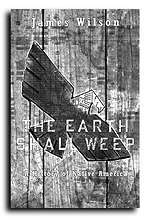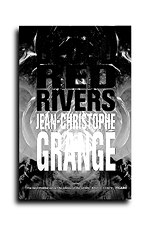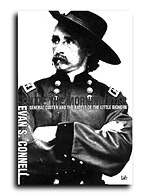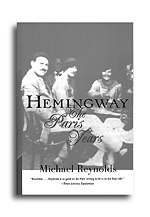|
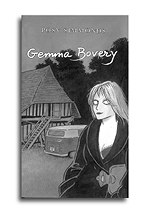 |
book news & reviews
by Scott Steedman

“Gemma Bovery”
Bailleville, Normandy, the present day. A beautiful blonde Englishwoman called Gemma Bovery lies dead on the kitchen floor, her face contorted in pain. Her husband Charles runs to tell the neighbors. Has Gemma swallowed arsenic like her namesake, Madame Bovary? Was it her debts and her torrid affair with the aristocrat’s son from the château next door that pushed her over the edge? Or has Joubert the baker, our storyteller and Charles’ confidant, just read too many books?
This wonderful work is what the French would call a bande dessinée and the Americans a graphic novel. Simmonds, who once did comic strips for The Guardian, is a superb, low-key cartoonist. But her real talents are as a storyteller and satirist of modern manners. Gemma’s life, cleverly told through flashbacks and diary entries, is part Bridget Jones and part “A Year in Normandy.” It could just be comical, which it is, but we feel for her as she abandons her yuppie London lifestyle for a new start in a half-timbered cottage far away.
The characters, even the minor ones, are wonderfully drawn, in both pictures and words: the absent-minded Charles with his chunky sweaters and VW van, Patrick the slimy restaurant critic, Charles’ neurotic ex-wife, the filthy rich English neighbors who don’t speak a word of French, the aristocrats appalled by all these slovenly Anglais. Among Gemma’s reasons for hating Patrick: “the repulsive way he checks his breath before parties by going ‘huhhh’ into his hands.”
This is a superlative piece of social satire, funny and profound. I read it twice, once to find out who done it, a second time to savor the details.
“The Earth Shall Weep” by James Wilson (Picador) and “Son of the Morning Star” by Evan S. Connell (Pimlico)
These two excellent books tell the same story, the white man’s annihilation of Native America, from two ends of the telescope. One covers five centuries of history across the whole continent; the other describes one dusty June afternoon in Montana. Both are major achievements, eloquent attempts to come to terms with America’s very own genocide.
Wilson’s theme, described in his subtitle as “A History of Native America,” is huge, and he has wisely chosen to spare us most of the details. Instead of giving us battles and treaties, he spends much of his time quoting Europeans and Indians, to emphasize the tragic differences in worldview which lead to so much conflict and slaughter. A few examples set the pattern, to be repeated over and over, with only one winner.
In the first chapter, for instance, he describes the Crusades, seven centuries of fanatical religious war that ended with the expulsion of the Arabs from Spain in 1492. The Spaniards had developed a brutal military culture: “Now, with enormous self-confidence and religious triumphalism, but with a dark undertow of fear and paranoia, they looked around for other lands to conquer.” Enter Columbus and a whole new world of infidels ripe for the converting.
This idea of the conquest of North America as an extension of the Crusades goes a long way. You can see it in Cortés trying to baptize Montezuma, but also in the Christian schools where native children were still being forcibly converted in the 1920s, in a soul-destroying attempt to “kill the Indian and save the man.”
Wilson’s extremely intelligent book is full of big ideas like this, put across with admirable sobriety. He is excellent on religion and mindsets generally, and does not spare myths of the Indian as Noble Savage, a relic of the past as doomed as the Cro-Magnon. It is not a happy read, but it will certainly change your view of land of the brave.
One quibble: Wilson has a bizarre blind spot for Canada, half the continent and home to more than a million Indians. This is a pity. I would have liked to hear his views on Queen and the RCMP as an alternative model to President and the cavalry.
“Son of the Morning Star” is a very different book, and in many ways a better read. Connell is a novelist, and this is a novelistic account of the life of General George Custer, horseman, soldier, and romantic fool, and his famous Last Stand, in which he charged with 280 soldiers into the biggest Indian camp the continent had ever seen.
Part of the fascination with the Battle of Little Bighorn is that every bluecoat died, so no one really knows what happened. But everyone who ever lent a mule to the half-bred blacksmith who fixed the wagon wheels on the regimental chuckwagon had a tale or two, and told them to some journalist for a plug of whiskey. Connell has strung them together in a monumental shaggy dog story that is really the story of the American West. It’s all in the digressions, from the fate of Custer’s dog to how Sitting Bull got his name.
Connell has immense sympathy for the Indians, and is as good on their lives as anyone I have read. But he is just as interested in the soldiers and settlers, and can’t help liking Custer, that stupid poser who rode so hard that the Sioux called him “Iron Backsides.” Brutal with his men, scared of nothing, a glory-seeker madly in love with his dogs and his wife, he was a hero for another age.
"Blood Red Rivers” by Jean-Christophe Grange (Harvill)
This thriller was a huge hit in France last year, and is being marketed as a French “Silence of the Lambs.” It is set in the Alps, where a mutilated corpse is found high in a glacier. The rest of the plot, which involves the usual cat-and-mouse game while the bodies and the red herrings pile up, is pretty predictable: I worked out the murderer and the motive just past the half way mark. What makes it interesting are the two cops, one a dreadlocked Arab from the Nanterre cités, the other a star detective who’s been demoted because he can’t control his violent impulses.
“Hemingway: The Paris Years” by Michael Reynolds (Norton)
This is the second in Reynold’s massive five-volume biography, reissued for the centenary of Hemingway’s birth. It covers the most interesting part of his writing life, in which he discovered Montparnasse and the bullfights at Pamplona, sat at Gertrude Stein’s feet, and went from writing purple journalism to his best short stories and “The Sun Also Rises.” There is more here than most people will ever want to know about the man; the writing style, part novelistic, part ham-Hemingway, can be irritating, but tends to take you along. But five volumes? That’s a lot of aperitifs. |
|



